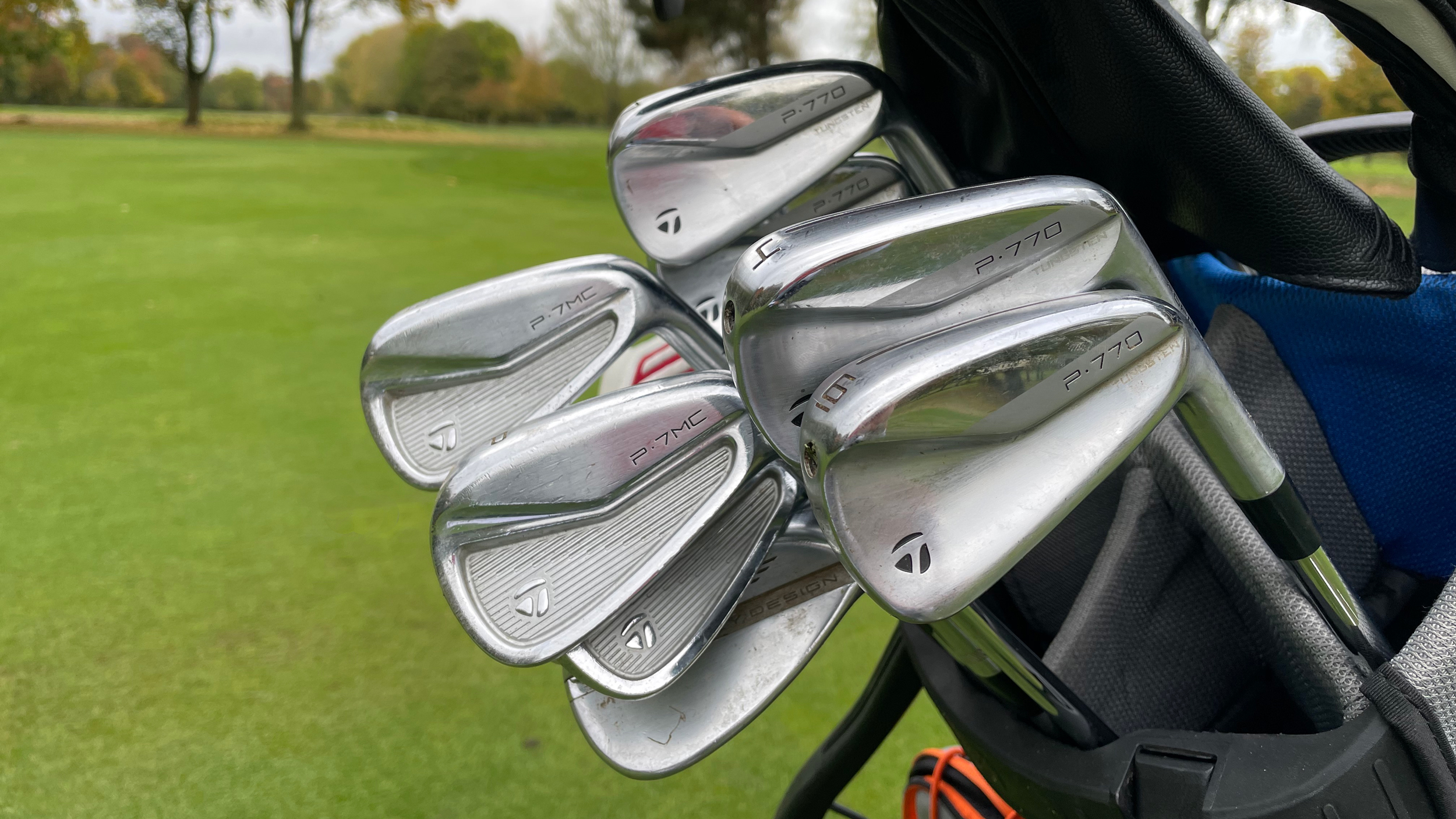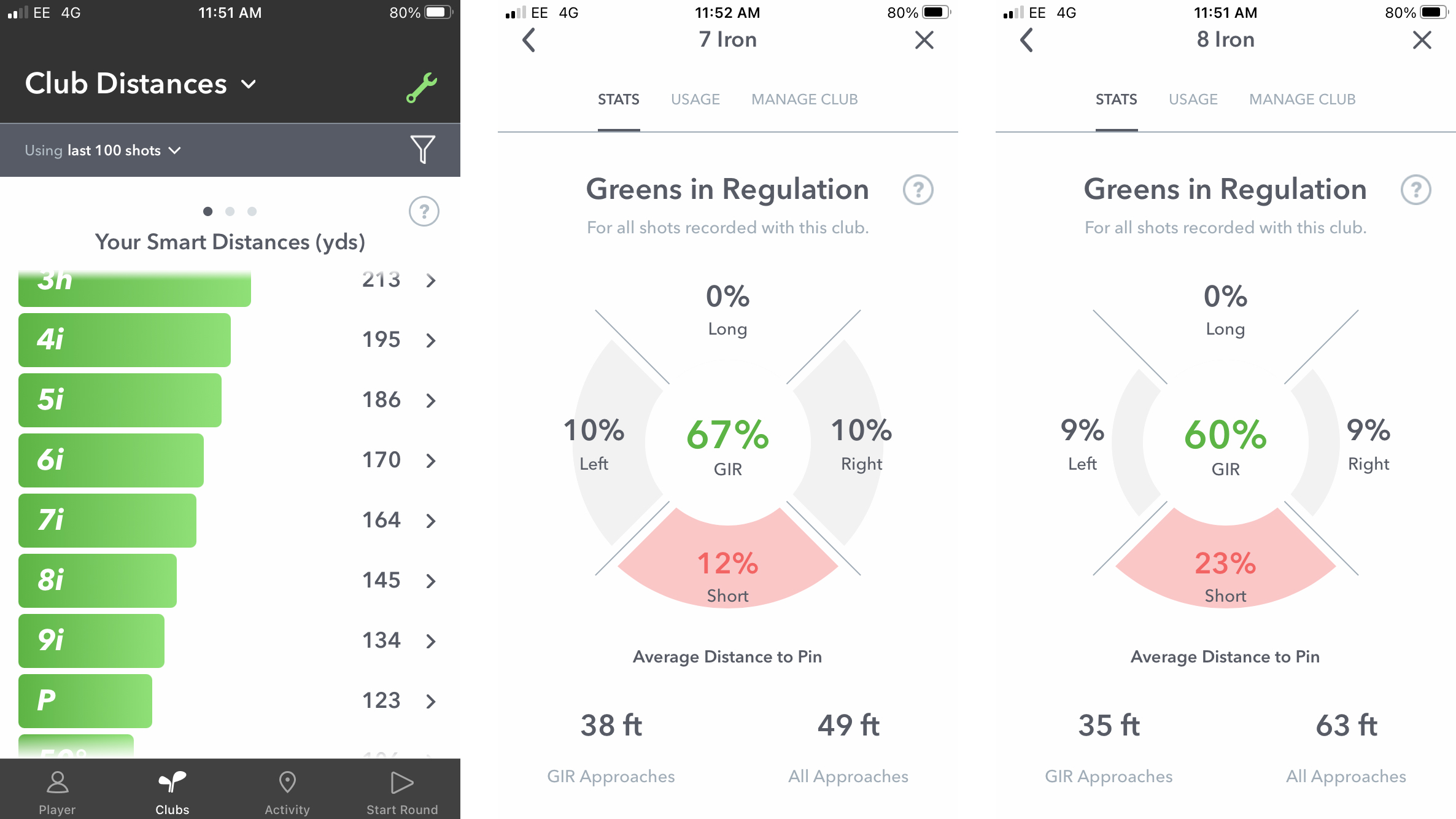Why I Regret Using A Combo Iron Set
Joel Tadman explains why he feels like having the wrong type of combo iron set has been costing him shots


Why I Regret Using A Combo Iron Set
Even as someone with access to the latest equipment, I often make mistakes with the clubs in my own bag. They’re admittedly easily rectified, but there’s a big one I’ve been persisting with that I believe is costing me shots. That’s having a combo set of irons.
The idea of a combo or combination set is the have different types of iron within a set to deliver certain performance attributes where they are needed. Typically you would see this in the form of slightly larger, more forgiving long irons - like on the new PXG 0317 ST Blade irons, for example. But in my case, I mixed up the other end of the set - opting for more feel-orientated short irons. Specifically, I replaced my hollow headed TaylorMade P770 short irons with one-piece TaylorMade P7MC muscle cavities.
The thinking at the time was that my ball striking was at a level where I could get away with less forgiving short irons and that the reward would be more consistent distances and a softer feel. Maybe it was back then, although I'm not so sure, and in reality it hasn't worked out. Having had these irons in the bag for over a year now, I am whole heartedly regretting not opting for a full set of P770s.
Why? It turns out, my ball striking with my short irons isn’t as accomplished as it should be. As a result, I often come up frustratingly short with my PW, 9-iron and 8-iron. There is a significant difference in the amount of forgiveness in the two models too, which becomes even more apparent when I’m not swinging at my best. Essentially, the P7MCs feel like hard work, and I consciously feel I have to hit them harder to get them to travel the distance I want them to, which in turn leads to more inconsistent strikes - it’s a viscous circle.

One look at my Arccos data confirms a sizeable drop off in distance where I transition from the P770s in the 7-iron to the P7MCs in the 8-iron. A 19-yard gap is way too much in the 130-150 yard distance bracket where the bulk of my approach shots are hit from. I also hit more greens with my 7-iron versus my 8-iron and come up short twice as frequently with my 8-iron as I do with my 7-iron - which is scandalous frankly.
Don’t get me wrong, in the right hands and when I strike them properly, the P7MCs are great - one of the very best irons for low handicappers. The feel is buttery soft and I’ve hit some great shots with them. But even though my handicap is trending downwards (I’ve gone from a 4.7 index to 3.3 this year), they just don’t provide me with the margin for error I need on shots where I’m looking to hit the ball close and make birdies. I'm possibly being hard on myself - my Arccos data suggests I'm neither gaining or losing strokes with my approach play compared to a 4-handicap golfer. But in my head, it's the one area of my game that is holding me back.
Get the Golf Monthly Newsletter
Subscribe to the Golf Monthly newsletter to stay up to date with all the latest tour news, equipment news, reviews, head-to-heads and buyer’s guides from our team of experienced experts.
I should also point out that this is no reflection of TaylorMade as a brand. The P770s are also one of the best TaylorMade irons right now and I went through the excellent custom fitting process for my irons. The decision to split the set and where to do so came down solely to me, I wasn't pushed in any direction by the fitter. Creating a combo set often comes down to what feels right for the player and I remember having my heart set on a split set before even trying them out, which was probably part of my downfall. You must go into a fitting with a completely open mind.
This doesn’t necessarily apply to me but there is also the elephant in the room of how having a combo set affects resale value. I would presume this is more applicable for a set split in the way I have with more feel-orientated short irons rather than more playable long irons. It also won’t apply to sets that are made up like this as standard, like on the PXG ST Blade irons for example.
I’ll soldier on for now, or possibly switch into the Ping i59 irons in search of a change in fortunes. The TaylorMade P-Series irons are due to be replaced soon and if that happens, I’ll be tapping up TaylorMade for a full set of P770s given they're one of the best golf irons on the market for my ability level and I’m confident this would be the solution to my iron play issues.

Joel has worked in the golf industry for over 15 years covering both instruction and more recently equipment. He now oversees all equipment and video content at Golf Monthly, managing a team of talented and passionate writers and presenters in delivering the most thorough and accurate reviews, buying advice, comparisons and deals to help the reader or viewer find exactly what they are looking for.
One of his career highlights came when covering the 2012 Masters he got to play the sacred Augusta National course on the Monday after the tournament concluded, shooting a respectable 86 with just one par and four birdies. To date, his best ever round of golf is a 5-under 67 back in 2011. He currently plays his golf at Burghley Park Golf Club in Stamford, Lincs, with a handicap index of 3.1.
Joel's current What's In The Bag?
Driver: Titleist GT3, 9°, Fujikura Ventus Black 6 S shaft.
Fairway wood: Titleist TSR3, 15°
Hybrid: Titleist TSi2, 18°
Irons: Titleist T150, 4-PW
Wedges: Titleist Vokey SM10, 50°, 54° and 58°
Putter: LAB Golf DF3
Ball: 2025 Titleist Pro V1x
-
 The Last Time Rory McIlroy Won A Major (Prior To The 2025 Masters)....
The Last Time Rory McIlroy Won A Major (Prior To The 2025 Masters)....We wind the clock back to the year 2014, when Rory McIlroy was the heir-apparent to Tiger Woods
By Michael Weston Published
-
 I'm Thrilled For Rory McIlroy But Gutted For Class Act Justin Rose... I'd Love Him To Win Another Major
I'm Thrilled For Rory McIlroy But Gutted For Class Act Justin Rose... I'd Love Him To Win Another MajorJustin Rose pushed Rory McIlroy all the way in The Masters, and while I am super impressed by the Career Grand Slam, part of me is hurting for the Englishman...
By Barry Plummer Published